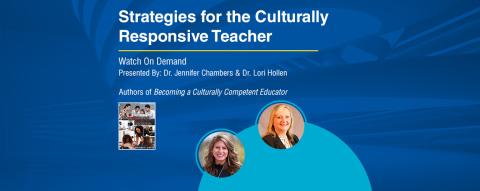
Community Colleges: The Masters of DEI
If you are keeping up with academic literature and the administrative politics at your own institution, you are likely hearing a great deal about how Diversity, Equity and Inclusion (DEI) should become one of your primary missions, if it isn’t already. Most institutions describe the components of DEI as the following: ‘Diversity’ refers to the presence and acceptance of differences with regard to gender, ethnicity, age, socioeconomic status, beliefs, etc., for those both taking and teaching classes. ‘Equity’ is the process of ensuring that processes and programs are impartial, fair and provide equal possible outcomes for everyone. ‘Inclusion’ is the practice of ensuring that everyone feels a sense of belonging within their institution.
While DEI may be a new focus or concept to some institutions, its principles serve as the foundation upon which community colleges have always existed. Community Colleges have an ‘open admission policy’ to anyone who possesses a high school diploma, or a certificate of equivalency and is 18 years of age (and even with these minimal criteria, there are exceptions). For contrast, 15 minutes away from the community college at which I am employed, a major university requires a 3.0 GPA, a high school graduation rank within the top 25% of their class, or exceedingly high scores on placement tests. Different admission criteria such as these can create two quite different populations of students. My community college has earned the distinction of being a Hispanic Serving Institution (HSI) with 53% of its students coming from minority backgrounds, but our nearby university has not earned HSI distinction (although two of its satellite campuses have) with 47% (its highest % ever) of students coming from minority backgrounds.
Principles In Practice
In my own General Biology class, I routinely have students ranging from 15-60 years old of all ethnicities, some who speak and write better English than myself and are well-prepared to learn. There are others who are obvious victims of the K-12 system, likely lacking encouragement from home and barely able to read or write. Some students come from financially stable families, where others, which I learned though many heart-wrenching conversations, are struggling with food, housing, and transportation insecurities. It then becomes the job of each community college instructor to educate this collective body of students containing this degree of diversity, ensuring that everyone has equal opportunity for success, finding each student’s individual level at which they are challenged but not pushing anyone too far nor leaving anyone behind. We excel at this task and thrive in this environment! This is what we do best, and many of us have been doing it for decades.
Obviously, not all institutions can or should become community colleges, so what can other institutions learn from community colleges? To answer this, we just have to revisit the attributes of community colleges that makes them both so different from large universities and so successful. Community colleges enroll practically anyone, have small class sizes, rarely have teaching assistants, and their emphasis is on teaching, not on research. As a result, community college instructors have the rewarding opportunity to get to actually know their students as individuals. Instead of lecturing to a nameless crowd, knowing nothing about the audience and possibly making false assumptions, we learn the unique background, strengths, challenges, dreams, and personality of every single student. Our small class sizes are a breeding ground for pedagogical innovation that involves interactive group work.
My class of 48 students is divided in two lab sections with 24 students each. It is in these labs that diversity shines. Each group of students works directly with me as we share experiences, perspectives, and opinions, working towards the common goals of gaining scientific knowledge and becoming better thinkers. Every semester, it becomes apparent to everyone that diversity is what drives science forward. If everyone thought the same way, had identical approaches to a given question or problem, or agreed on everything, our understanding of the world would not progress. Also, when General Biology reaches the topics genetic diversity and natural selection, I use our own class as the example. Over the course of the semester, everyone in the class eventually recognizes that diversity is a strength (and that, of course, is a topic in and of itself when discussing population genetics).
While many of the Community College policies are managed at the State or District levels, what advice can Community Colleges offer to instructors at the classroom level?
- Spend time getting to know your students as individuals.
- Always be accepting, motivating, and encouraging, but also be realistic and honest about an individual’s needs to be successful.
- Focus on the education of your students and don’t let that become secondary to institutional politics or personal research.
- Be accessible.
- Don’t allow your students to simply be a number.
- Create activities and discussions that illustrate the benefits of diversity.
Overall, remind everyone that as members of the human race, we are all on the same path of gaining a better understanding of science.
About the Author: Andrew (Andy) Baldwin was raised in North Carolina by a father who was a wildlife artist/nursery owner and mother who grew up in the newspaper industry. Andy’s love for nature and firsthand experiences complemented the formal education that he earned at the University of North Carolina at Charlotte (UNCC). There, he earned a BS in Biology with Honors by completing a project involving the state’s native carnivorous pitcher plants that resulted in his first publication. He continued his education at Appalachian State University (ASU) in NC’s Blue Ridge Mountains where he earned a MS in Biology. Later, he began a project studying evolutionary patterns in salamanders at the University of Texas at Arlington (UTA). In 2002, Andy earned his Ph.D. in Quantitative Biology, earned awards for both teaching and research, and then spent a year as a postdoctoral fellow at Texas Tech University (TTU) before accepting a full-time teaching position at Mesa Community College (MCC) in Arizona. He is the author of Majors' Biology textbook, Biology: Life as We Know It.



